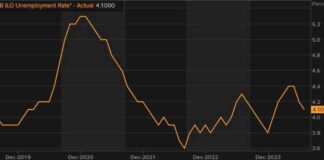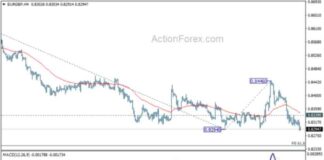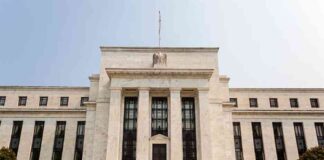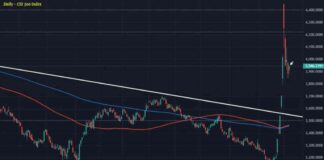Revolving debt in the United States has soared to $1.36 trillion in July, exceeding pre-pandemic levels by a significant 25%. This surge in consumer debt reflects a complex interplay of factors, including rising inflation expectations, increased borrowing behavior, and concerns about job security.
Consumer sentiment regarding inflation has been a key driver of the recent surge in revolving debt. According to the Federal Reserve Bank of New York’s report on inflation expectations, consumers are bracing themselves for a future of higher prices. Short-term and long-term inflation expectations remain stable at 3% and 2.8%, respectively, with a three-year outlook increasing to 2.5%. This persistent expectation of inflation has led consumers to take proactive measures to manage their finances, including increasing their borrowing to offset the rising cost of living.
The Federal Reserve’s Consumer Credit Outstanding report, also known as G.19, further illustrates the extent of consumer borrowing in July. Revolving debt, which includes credit card balances, surged at an annualized rate of 9.4%, reaching a total of $1.359 trillion. This represents a significant increase from the $1 trillion in revolving debt reported in 2019, indicating a 24.8% rise in consumer borrowing over the past two years.
Nonrevolving debt, which includes auto loans and student loans, also saw a substantial increase in July. The annualized pace of nonrevolving debt growth accelerated to 4.8%, exceeding previous months’ growth rates. The $25 billion increase in credit far surpassed the consensus estimate of $12 billion, highlighting the extent to which consumers are relying on borrowing to sustain their spending habits.
Consumer expectations regarding job security have also influenced their borrowing behavior. The measure of unemployment expectations, which gauges whether consumers believe unemployment will be higher in the future, increased to 37.7% in July. This growing sense of economic uncertainty has prompted consumers to take on more debt as a precautionary measure, anticipating potential financial challenges in the months ahead.
Despite the increase in borrowing, consumers are becoming more cautious about their ability to meet their financial obligations. The average perceived probability of missing a minimum debt payment over the next three months rose to 13.6%, the highest level since the onset of the pandemic. This heightened sense of financial insecurity underscores the challenges that many households are facing as they navigate a volatile economic landscape.
The surge in revolving debt has outpaced wage growth and inflation, indicating that consumers are relying on credit to bridge the gap between their income and expenses. Median household spending growth expectations have increased to 5%, suggesting that consumers are willing to take on more debt to maintain their standard of living. However, the sustainability of this trend remains uncertain, as rising prices and stagnant wages could pose challenges for consumers in the coming months.
Looking ahead, the release of core inflation and consumer price data in August will provide further insights into the state of the economy. These data points will shed light on whether consumers’ embrace of credit in July was a prudent financial decision or a risky gamble in the face of mounting economic pressures. As consumers continue to navigate a complex financial landscape, the need for prudent financial management and strategic planning becomes increasingly crucial to ensure long-term financial stability.
In conclusion, the surge in revolving debt in July reflects a confluence of factors, including rising inflation expectations, increased borrowing behavior, and concerns about job security. As consumers grapple with economic uncertainty, the challenges of managing a mounting debt load become more pronounced. By staying informed, making strategic financial decisions, and seeking support when needed, consumers can navigate these turbulent times with resilience and confidence.

















